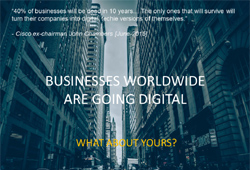“This article reposted here was originally published as the cover story in the July-2015 edition of Computer Society of India - Communications magazine. You can also read this article at its source at http://www.csi-india.org (Link path: http://www.csi-india.org->PUBLICATIONS->CSI Communications->CSIC 2015->CSIC 2015(July))."
Data Science means extraction of knowledge from data. The key word in data science is not data; it is science[1]. Science of something means study of that thing to extract knowledge about it. In most generic sense, the purpose of every data science project is to answer a question (or a set of questions) backed by hard-facts. Academicians and researchers apply scientific principles to get specific answers about a research subject. Similarly, businesses employ data science principles to improve customer engagement, devise growth strategies, optimize operations, and build competitive advantage. This article shares a perspective on what data science really is, how it impacts various industries, what benefits does it offer to organizations – both for-profit and not-for-profit, and what are the key data science trends prevalent today.
DATA SCIENCE: WHAT IT IS (AND ISN’T)
Apparently Peter Naur and John W. Tukey seem to be among the first ones to have treated data analysis within the precincts of science[2]. John W. Tukey, who coined the term ‘bit’, has mentioned it in his 1962 paper ‘The Future of Data Analysis’. In my view, while the term ‘data science’ is relatively young, its application is not. There is an early evidence[3] of 1854, of Dr. John Snow applying scientific principles of data analysis to detect the root cause of The Cholera Epidemic in London. So data science has been around for a while albeit in different forms.
While we tend to associate data science with several other terms such as artificial intelligence, machine learning, data mining, analytics, statistics, computer science, and operations research, each has its own specific meaning that is different from another. Artificial intelligence is intelligence exhibited by machines and it pertains to the creation of a software system that simulates human intelligence. Machine learning is a science that involves development of self-learning algorithms which can be used to make data-driven predictions in a similar but unfamiliar environment. Popular examples include self-driving cars and web searches. Statistics is a study of collection, organization, analysis, and interpretation of numerical information from data. Data mining is the practice of analyzing data using (machine-learning) algorithms and statistical techniques in order to solve a problem. Computer science covers computational complexity, distributed architectures such as Hadoop, data compression, optimization of data flows, and not to mention computer programming languages (such as R, Python, and Perl). Advanced analytics or Analytics is just a marketing driven terminology that applies many of the data science principles to solve complex problems faced by businesses and society. So while the differences are subtle, each one has its own application in industry and academia. Nevertheless, data science overlaps with computer science, statistics, operations research, and business intelligence in many ways and almost completely encompasses data mining and machine learning.
The subtle differences notwithstanding, data science is an independent discipline which amalgamates statistics, computing skills, and domain knowledge. At the core, data science helps in deriving valuable insights from data. The data science process involves data collection, data pre-processing and cleaning, data modelling and analysis, and insights generation which are applied within a given functional domain to make decisions. Although the process is similar to knowledge discovery and data mining (KDD), a data scientist requires computing skills and domain knowhow to arrive at context-specific decisions. The person working in data science needs to exhibit three distinct skills applied in the different phases of a data science project. As shown in EXHIBIT-A[4], an individual with data science expertise possesses (or needs to possess) a combination of mathematics and statistics knowledge, hacking skills, and substantial domain understanding. The hacking skills include familiarity (but not necessarily proficiency) with software programming but more importantly, a propensity at being able to manipulate any type of data. This is because real-world data hardly exists in a nice tabular format. It[5] is scattered in thousands of text files or on hundreds of web sites or in numerous unstructured excel sheets at best. True data scientists that possess all the three skills are not abundant; because the role entails making sense of amorphous data, deriving bespoke models, and developing algorithms to analyse a complex problem specific within a domain.

Unfortunately, simply churning out numbers or fiddling with inefficient models rarely solves a problem. This is the reason data scientist is one of the most coveted roles in industry today.
Data science is being applied in many industries. Some of the uses in various industries include weather forecasting, intuitive search in online search technology, customer engagement in retail and consumer products and services, fraud detection in banking and credit cards, prediction of sources of energy in Oil and Gas, evidence based medicines in healthcare, and sentiment analysis from social network feeds. Some fields that are routinely implementing analytics services are eCommerce, retail, consumer products and services, financial services, insurance, pharmaceuticals, manufacturing, telecommunications, and high-tech.
HUNTING PEARLY INSIGHTS IN THE OCEAN OF DATA WITH DATA SCIENCE
More and more businesses are embracing data science and analytics in multiple organizational functions. There are mainly three most common ways in which data science is deployed depending on the size of an organization. Large corporations usually deploy their own in-house analytics departments by recruiting data analysts. Business leaders in large corporations typically have humongous quantities of data to sift through in order to make decisions that are important for their business growth. While having an in-house analytics team may not always be an ideal way for institutionalizing data science, even for large corporations, they seem to be driven by large amount of resources at their disposal. Secondly, some companies prefer to buy a COTS (Commercial-Off-The-Shelf) product to cater to some standard requirement. Thirdly, many mid-to-large sized companies prefer to employ customized data science or analytics services to solve their specific data analysis and business operational requirement. This option seems ideal for businesses looking for the flexibility to hire precise services for their bespoke needs.
While the data science projects in most for-profit organizations are getting more and more complex, the fundamental purpose underlying these projects remain the same – to achieve sustainable growth and improve profitability for their businesses. To that effect, the companies put data science into action to gain meaningful insights into their customers, operational processes, supply chain and logistics, product and/or service usage, financial aspects, and future business performance. Conventionally, data science has mostly been applied for market research and market segmentation. However, businesses have a lot more at stake with every business decision as competition has become more and more intense. Gone are the days when business decisions used to be taken on gut-feeling. In today’s globalized world, every major business decision needs to be data-driven. Data science assists organizations and individuals in making fact-based decisions that they can take and defend confidently. That is why it has become essential for organizations, business or otherwise, to deploy data science projects in every division responsible for making any kind of decisions. Some of the types of data science and analytics projects include customer focused analytics through clustering, recommendation engines, root cause analysis, automated rule engines, conjoint analysis to quantify perceived value of features offered, process simulations for operational analysis, predictive modeling for business forecasting, and clustering analysis to identify anomalies, just to name a few.
BENEFITS FROM IMPLEMENTING DATA SCIENCE INITIATIVES
There are some fantastic examples of business organizations gaining huge benefits by systematically and strategically deploying analytics initiatives that involve data science and ethnographic research. Procter & Gamble has institutionalized the data and design thinking approach to such as extent that it is now ingrained into their DNA. The result is that P&G boasts of more than 20 billion-dollar brands in their product kitty. Amazon, a technology company and not just an eRetailer, is really surviving and thriving by understanding customer preferences through the implementation of numerous algorithms. It has helped them to grow quickly from selling just books online in 1996 to target-selling twenty million products in countless other categories. There are many examples of smaller companies that streamlined their processes and implemented analytics based strategies to grow and enter into the big league. Data science initiatives within companies have rendered meaningful insights to drive their firm’s customer experience. These companies have utilized the insights to define their business growth strategies and pursue a culture of data-driven decision making. The benefits include getting pointers to new growth areas, generating ideas to introduce innovative new products, decreasing cost bases and improving productivity to boost profitability, identifying risks of obsolete technologies in their processes, detecting bottlenecks in supply chain, and streamlining inefficient operations.
Even as data science is rapidly changing the business world, it is also spreading its influence on other sectors such as academic research, governments, and social organizations. While the data deluge has increased the complexity for these sectors to analyze the data in a timely manner, it has also opened a plethora of opportunities for them.
Academic institutions in regions such as US, UK, and some countries in Asia are facing sustainability issues due to severe cuts in funding and grants. They are able to apply data science within their own institutional spheres to identify their respective competitive advantage and attract the right students to strengthen their reputation further. Similarly, medical research institutions are now able to work on projects like genome research, DNA sequencing, and stem-cell research for treatment of fatal diseases such as cancer and AIDS. Economists are able to analyze the publicly available data to determine relationships between income levels, education, health, and quality of life.
Governments and public sector organizations are concerned about issues such as monitoring and prevention of terrorist activities, early-detection and control of pandemics, and uniform aid distribution among the poorer countries, which they are able to tackle by sponsoring appropriate data science initiatives.
TACKLING CHALLENGES ALONG THE WAY
Data privacy and security concern has been one of the main reasons keeping some businesses from adopting data science. Moreover companies are facing real challenges in terms of bad quality of data, data inconsistencies, unreliable third party data, and information security. Nonetheless, all roads to meaningful business insights lead through data, whether it is organizational or public. Businesses need to put in place appropriate mechanisms to share data in a controlled manner with analysts and service providers in order to generate hidden insights that can be utilized for business benefits. Data breaches and data thefts remain a valid concern too. Past incidents, albeit few and sporadic, of customer confidential information getting stolen have deterred some from initiating analytics projects. However, business organizations are coming around to the fact that they are fast losing their competitive advantage to rivals due to staying away from analytics. Increasing number of organizations is taking up analytics to secure and grow their businesses as they do not want to be left behind any more. Organizations will increasingly recognize that it is not possible to operate in a 100 percent secured environment. Once organizations acknowledge that, they can begin to apply more-sophisticated risk assessment and mitigation tools. They will look to embed security at multiple levels viz. application-level, execution-level, storage-level, and even contract level. Interestingly, analytics itself is proving to be a great mechanism for security breach prevention.
KEY TRENDS AND THE ROAD AHEAD
In some of the western countries, data science has been thoroughly internalized within large corporations. Even the smaller businesses there employ analytics services to achieve specific business objectives. In India, while the (few) big corporations seem to be deploying such initiatives, most other organizations are still in the nascent stage. One survey of SME business owners cited that most common reasons for the slow pace of embracing [data science] are lack of awareness about the value offered by analytics, dearth of skilled resources, apprehension about technological complexity, cost and ROI concerns, and data security risks.
Notwithstanding the current adoption level, businesses are realizing that they may be taking a big risk not considering data science and analytics as a potent competitive strategy. There is a tremendous rise of personal data originating from social-media, sensor-originated data from wearables, and the Internet of Things (IoT) with the recent surge in the use of smartphones. More and more human actions are generating Exabytes of data today. To get a sense of the amount of data being generated, let’s just say that we will need around 50 billion trees made into paper to print 1 Exabyte of data. That’s roughly 9 huge stacks of papers, each touching Mars from Earth. This enormous amount of data will be of no use if not analyzed and utilized appropriately.
These trends are pushing businesses to re-think their business and growth strategies. There is an increased focus on teaching data science based courses by colleges and universities worldwide. Companies are realizing that the business environment has become uncertain with the fast pace of technological and demographical changes. As a result, many organizations are allocating higher budgets for deploying customized analytics for their businesses to deepen customer understanding, engage customers through multiple channels, identify new sources of revenue, improve productivity and profitability, streamline business processes, and build competitive advantage. Going forward, use of customized analytics will become pervasive. More and more organizations will develop their unique value propositions around the valuable insights they gain about their existing and prospective customers.
Implementing data science initiatives to build competitive advantage is a matter of leading and not following the pack. In an industry competing for the finite market share, early-adopters of data science best practices will be the eventual winners.
References:
[1] http://simplystatistics.org/
[2] Forbes: ‘A Very Short History Of Data Science’
[3] Edward Tufte: ‘Visual Explanations’
[4] Source: http://drewconway.com/zia/2013/3/26/the-data-science-venn-diagram
[5] ‘It’ refers to ‘the data’. In the modern world, the term ‘data’ is used in both singular and plural sense as per the context. Technically speaking, singular of data is datum.
Website link: https://www.veravizion.com/data-science-the-next-frontier-for-business-competitiveness/
“This article reposted here was originally published as the cover story in the July-2015 edition of Computer Society of India – Communications magazine. You can also read this article at its source at http://www.csi-india.org (Link path: http://www.csi-india.org->PUBLICATIONS->CSI Communications->CSIC 2015->CSIC 2015(July)).”
Related Posts:
<– 3 Lessons Every Executive must Learn from Wimbledon Centre Court
Why your Business should go Digital (INFOGRAPHIC) –>
Do follow Veravizion on LinkedIn to receive easy updates.
You can also subscribe to our blog – Our Perspectives – to receive interesting articles and tips in email. We would love to read your perspectives and comments on that.













